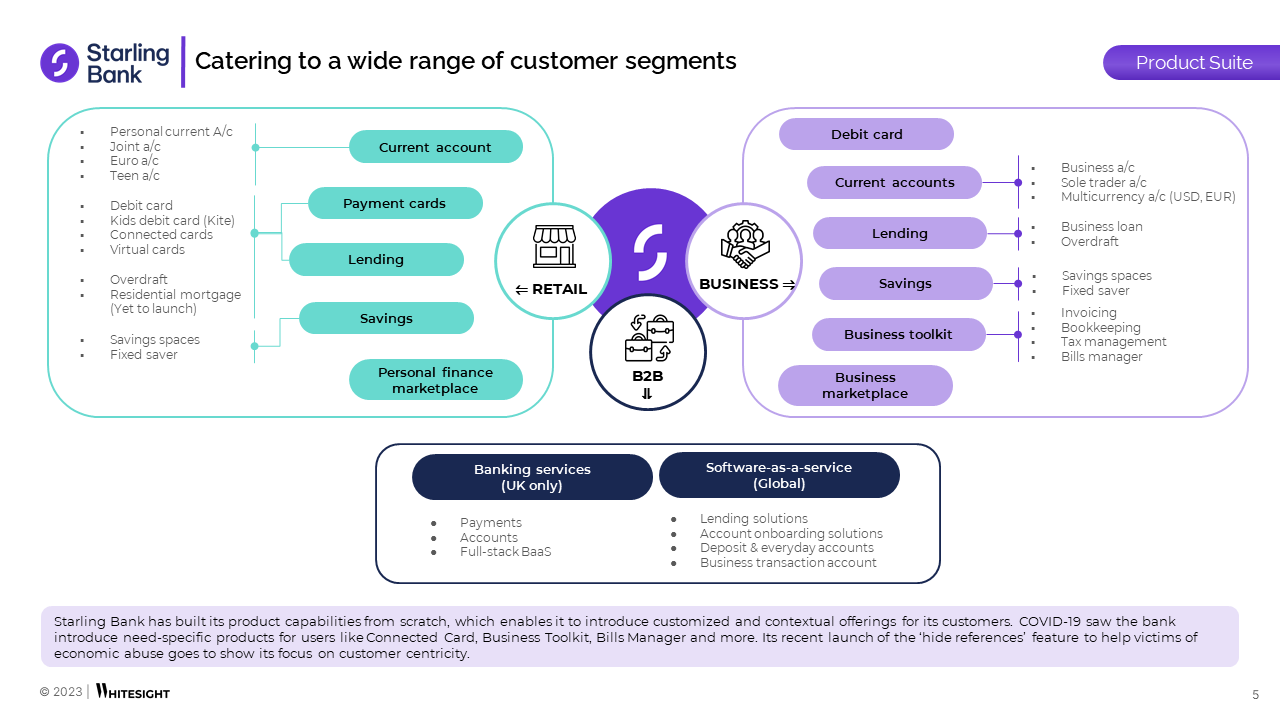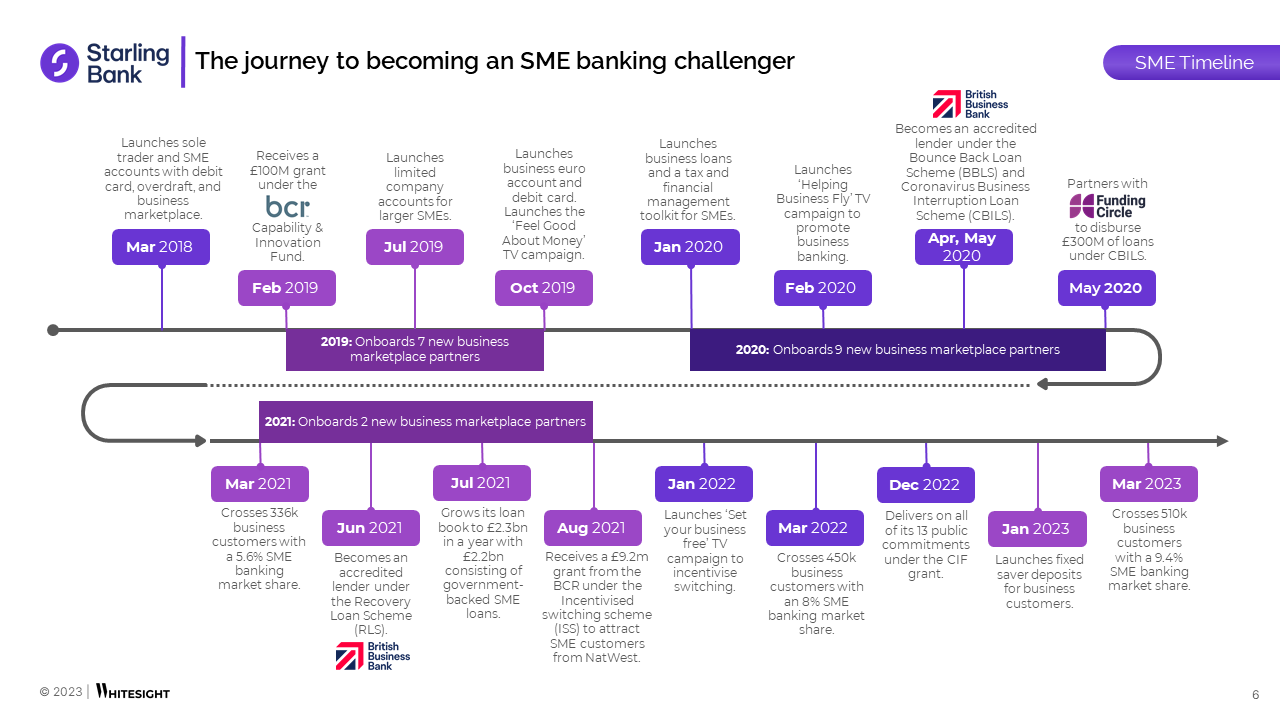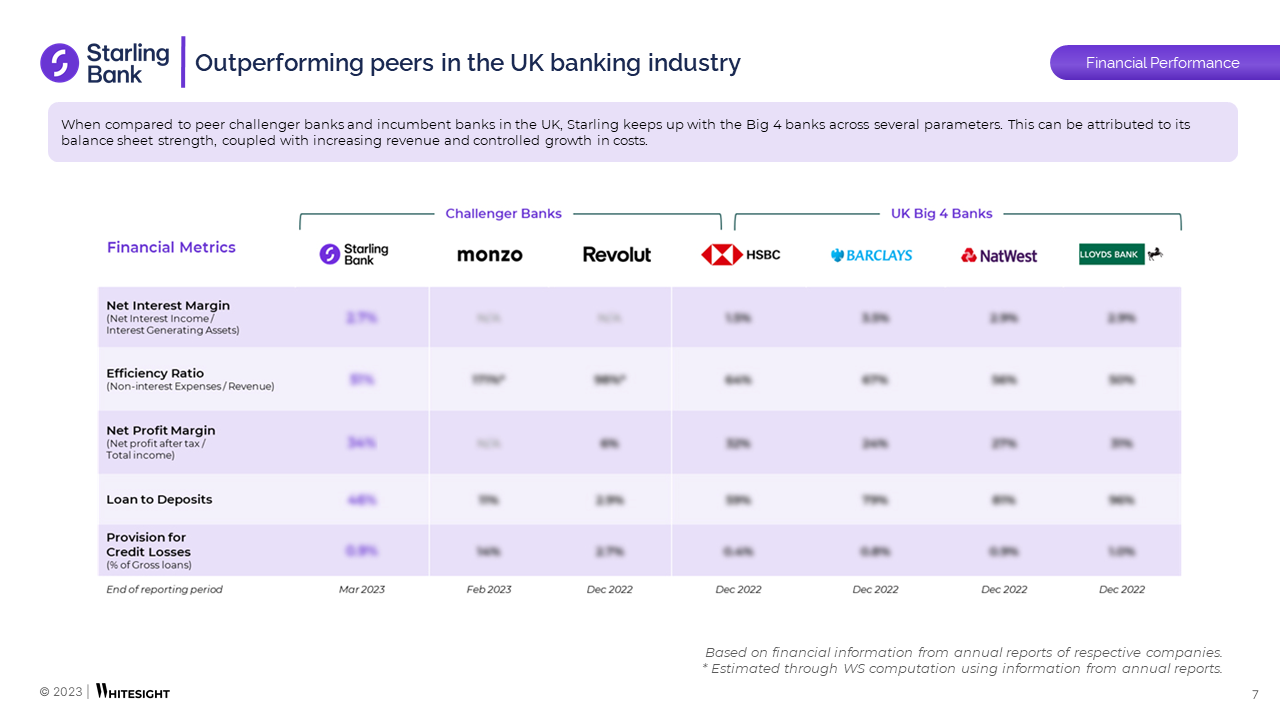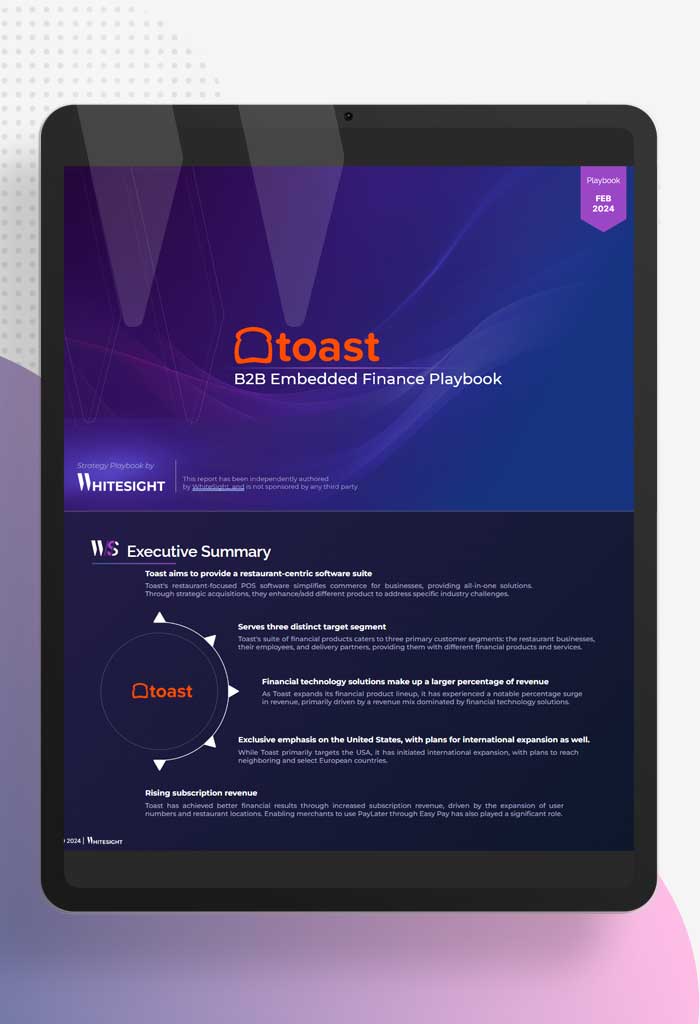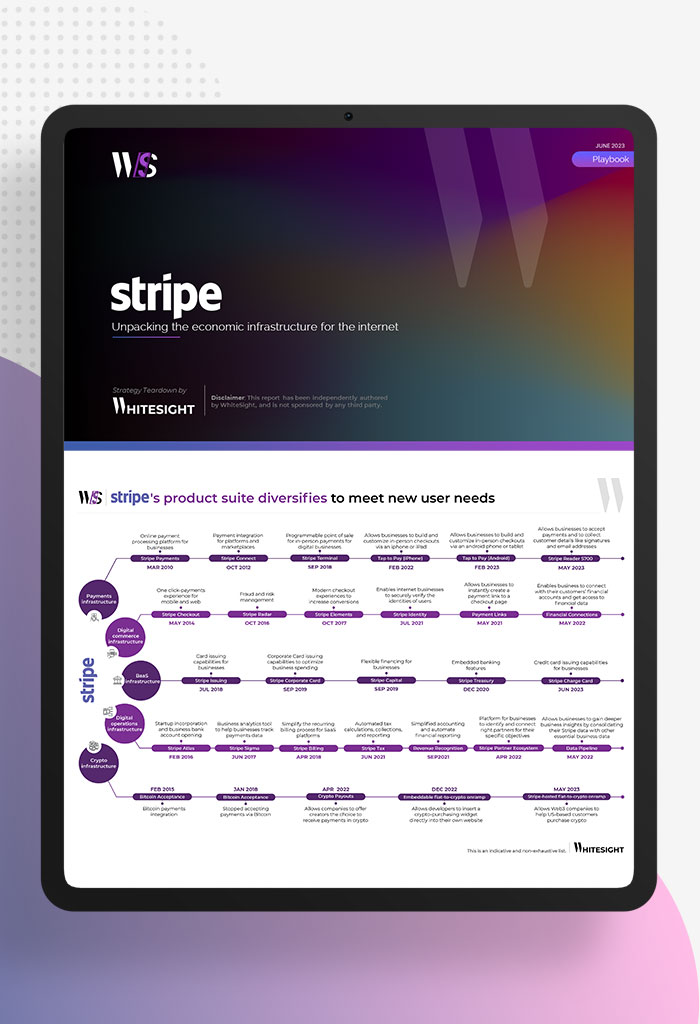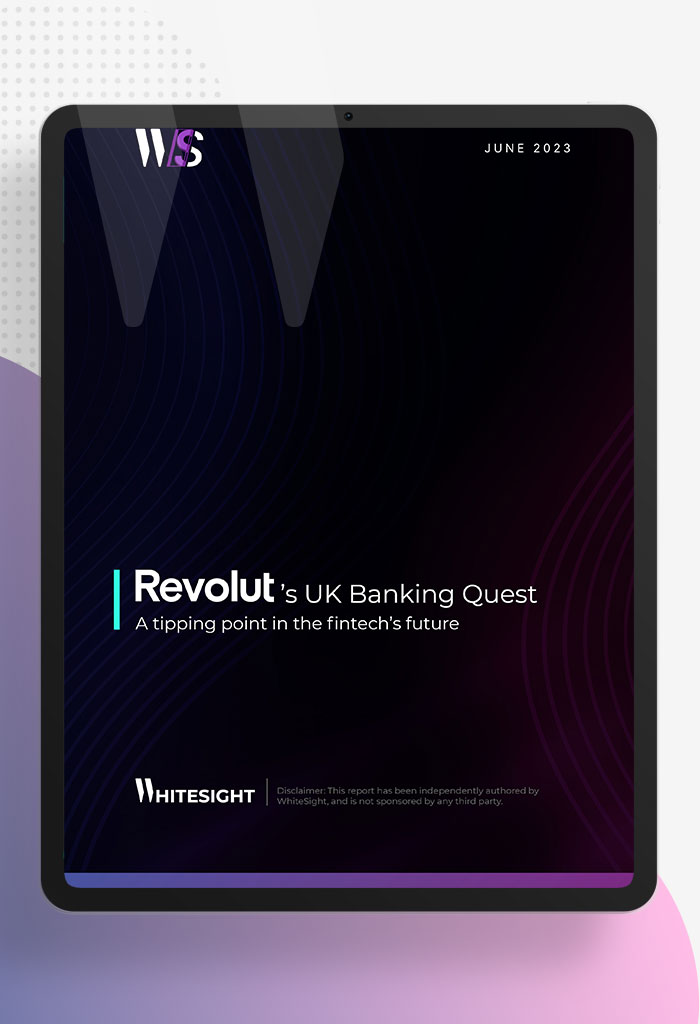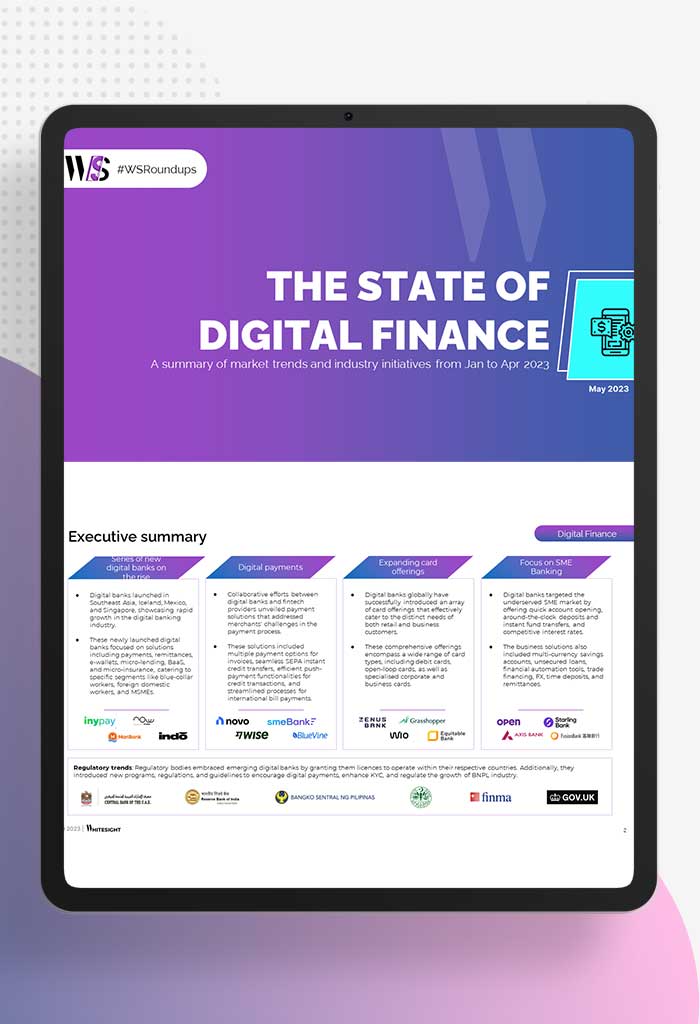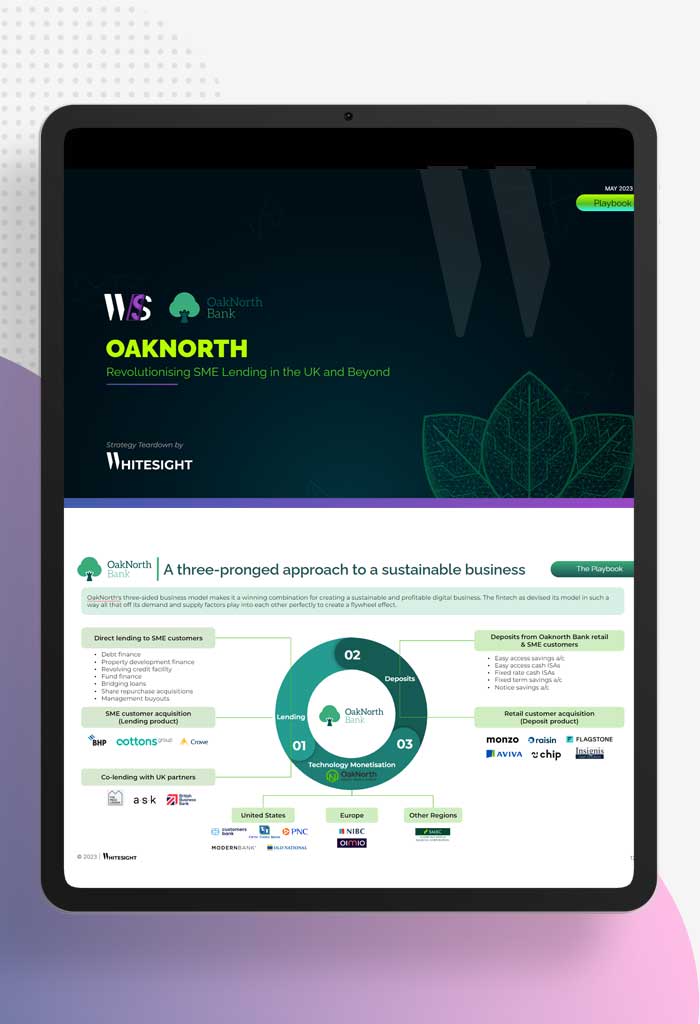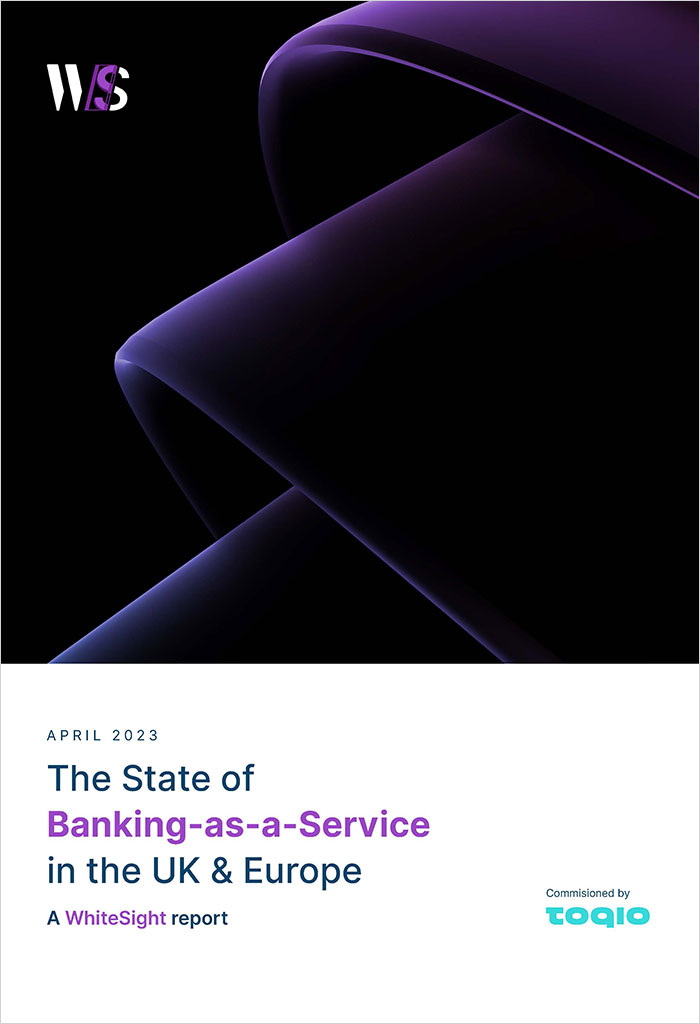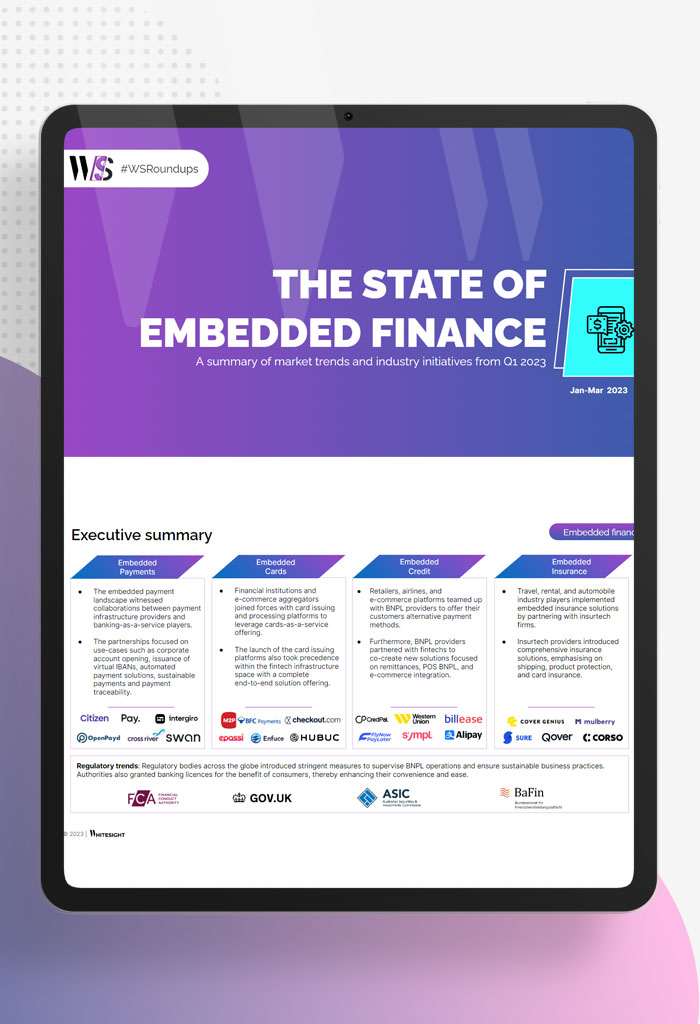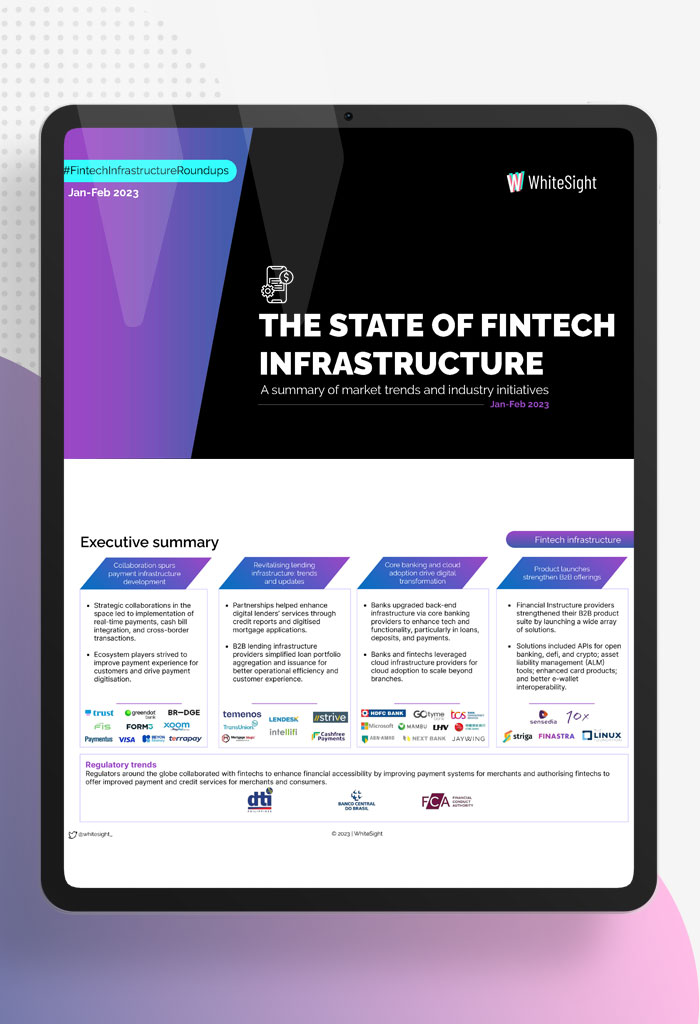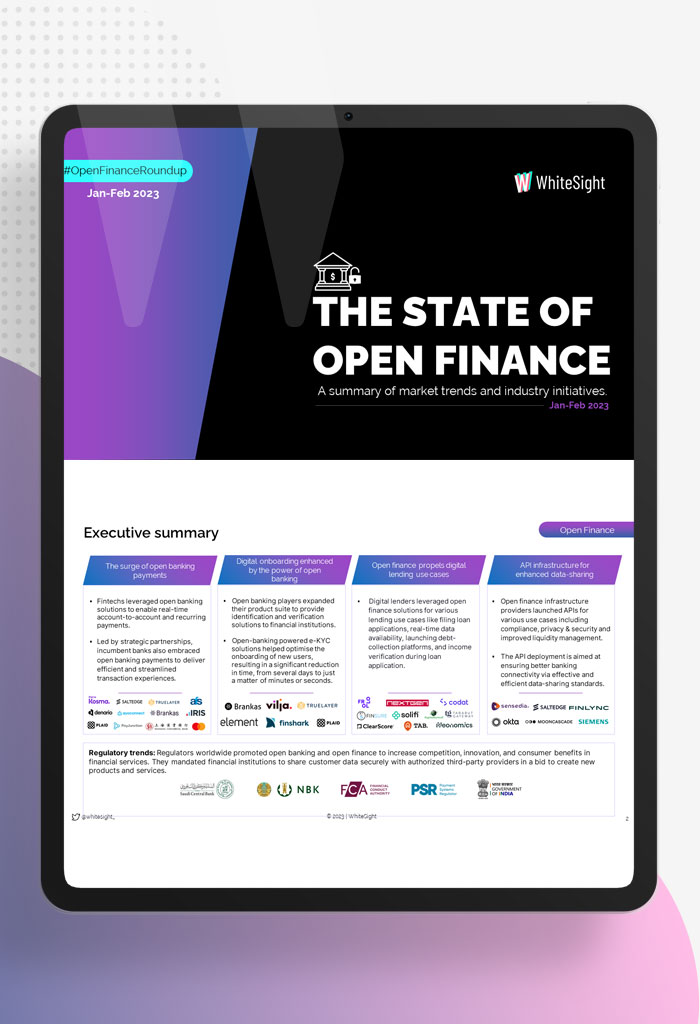Starling’s Challenger Bank Playbook
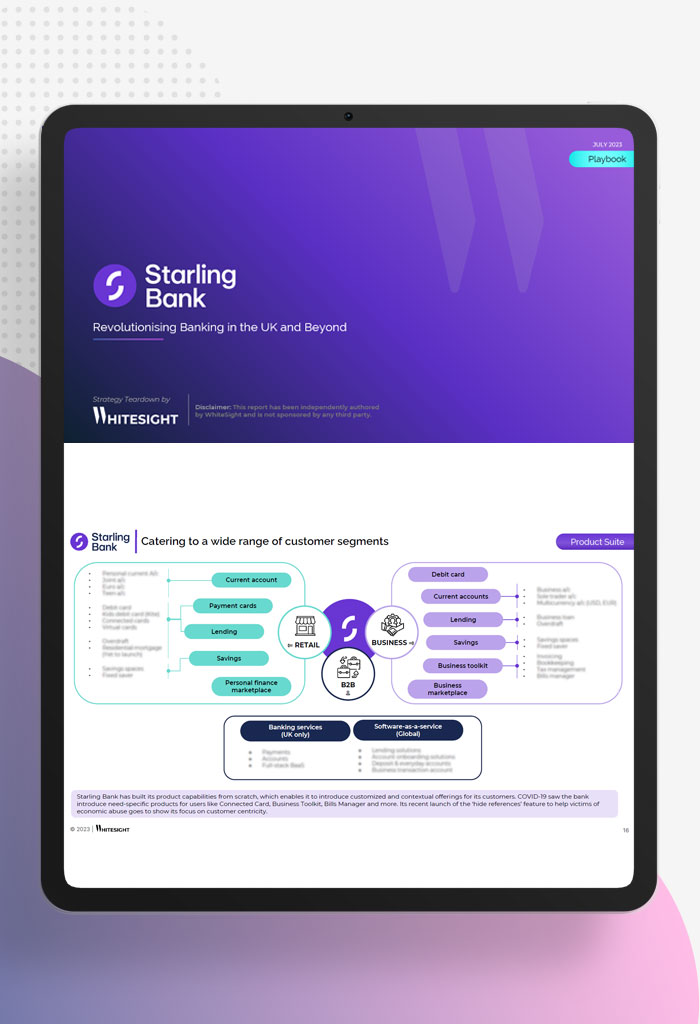
July 5, 2023
Starling’s Challenger Bank Playbook
Explore the journey of Starling Bank, a digital disruptor in the UK banking industry. With over 3.6 million customers, Starling aims to transition from a challenger fintech to a credible “grownup” bank. The report highlights their success in enhancing banking services, collaborating with fintech partners, expanding business banking, and global expansion through banking technology.
$49
Description
Here’s what you’ll get to know from the 30-page report:
- Business overview of the company, including stats and facts.
- Brief on how Starling built its identity and brand as a digital challenger and amassed a sizeable user base.
- Analysis of Starling’s differentiators – product suite, marketplace, asset diversification, and technology strategy.
- Deep dive into Starling’s strategic business banking pivot that made it a contender to the UK big banks.
- Analysis of the bank’s strong financial performance and how it compares with challengers and incumbents alike.
Already a subscriber? Log in to Access
Radar Subscription Plan
Radar Subscription PlanYour perfect fintech research companion – select a package that aligns with your aspiration
Not Ready to Subscribe?
Begin your fintech adventure free of charge-set forth with our complimentary offering.
Related Reports
Toast is revolutionising the restaurant sector by integrating financial services seamlessly into its restaurant management and Point of…
Dive into how Open Banking is shaking things up in the MENA region’s financial scene. It’s all about sparking collaboration…
Explore the journey of Starling Bank, a digital disruptor in the UK banking industry. With over 3.6 million…
Stripe is leading the fintech revolution, empowering a diverse range of businesses globally. Discover the tactics fueling Stripe’s…
Explore Revolut’s extraordinary growth, its journey towards obtaining a banking licence in the UK, the challenges encountered, and…
WhiteSight delves into the dynamic world of digital finance, bringing you an update from January to April 2023. We examine…
Explore OakNorth’s blueprint for building a tech-first bank that caters to the SME powerhouses of the UK. The…
Since the inception of Apple Pay in 2014, Apple has been at the forefront of bigtechs exploring the…
WhiteSight joins forces with Toqio to delve into the heart of the Banking-as-a-Service (BaaS) market in the UK and Europe,…
Embedded finance is experiencing an unprecedented surge in availability across multiple consumer touchpoints, enabling businesses to offer enhanced customer experiences…
With the world rapidly evolving and adopting new trends along the way, customers demand innovative products like never before, while…
The financial industry started the new year with the groundbreaking approach of open finance – an innovative paradigm that has…




